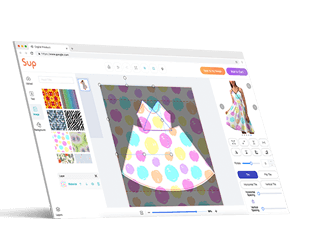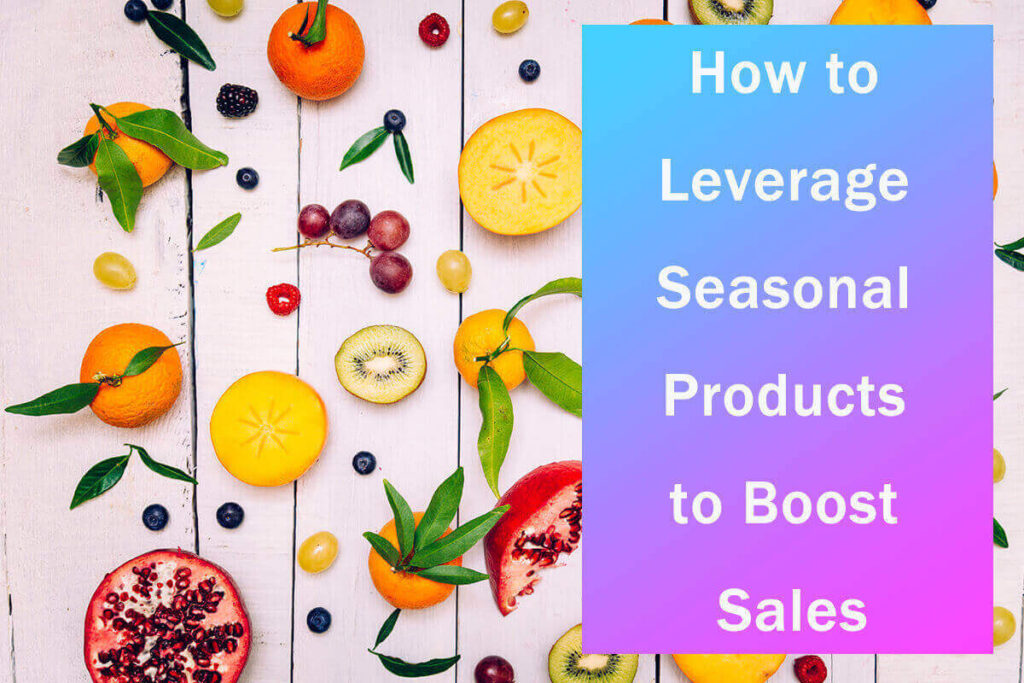How Much Does Google Advertising Cost in 2025? A Complete Guide for Beginners

Google dominates nearly 80% of the global desktop search traffic and continues to lead the search engine market by a wide margin. Most of Google’s revenue comes from advertising, which tells us just how powerful and profitable Google Ads really is.
For both beginners and seasoned marketers, running ads on Google has become almost unavoidable. Whether you’re trying to boost brand awareness, drive sales, or reach new audiences, Google Ads offers one of the most effective ways to get noticed online.
But how much does it actually cost to advertise on Google? And what determines those costs?
In this post, we’ll break down everything you need to know, including:
- How Google advertising pricing works
- How much Google advertising costs
- The key factors that influence ad costs
- How to budget effectively for Google Ads as an eCommerce business
How Google Advertising Pricing Works

Google Ads operates through an auction system, but your bid alone doesn’t decide whether your ad appears or not. Quality, relevance, and user experience all play important roles in determining who wins the auction.
Next, let’s look at the four main ways Google charges advertisers and their average costs. We’ll also explore how Google determines your cost per click (CPC) later in this section.
How Google Ads Charges You
Google offers several bidding strategies depending on your campaign type and goals. Whether you aim to get more clicks, impressions, conversions, or video views, each strategy charges you differently.
Cost-per-click (CPC) in Google Ads
This is one of the most common pricing models in Google Ads. It’s mainly used for Search and Display campaigns. With CPC bidding, you only pay when someone clicks on your ad and visits your website.
Let’s say 50 people see your ad, but only two click on it — you only pay for those two clicks.
CPC bidding works well if your goal is to increase website traffic or attract potential buyers to your store.
- According to 2024 data, the average CPC for Google Search Ads is about $2.69, though the cost can vary by region and industry. In the United States, the average CPC can reach around $6.56.
We’ll explain how Google determines your CPC later in this section.
Cost-per-thousand viewable impressions (vCPM) in Google Ads
This model is used mainly for Display and YouTube campaigns. With vCPM, you pay for every 1,000 times your ad is visibly shown to users, not just loaded on a page, but actually seen. It is often used when your goal is to build brand awareness rather than drive immediate clicks.
- In 2025, the average CPM for Google Search Ads is about €231.35 (around $250)
- The average CPM for Google Display Ads is around $2.59, and for video ads, it’s about $6.55.
Cost-per-action (CPA) in Google Ads
Cost per action, or CPA, is the total cost you pay when a user completes a specific action, such as making a purchase, signing up for an email, or downloading an app.
In simple terms:
CPA = Marketing Cost ÷ Total Actions
For instance, if you spend $1,000 on a campaign and get 40 sign-ups, your CPA is $25.
Google Ads usually automates bidding for CPA campaigns, optimizing your ad delivery to generate conversions at the lowest possible cost.
- The average CPA on Google Ads typically ranges from $30 to $50, depending on your niche and competition.
Cost-per-view in Google Ads
CPV is used mainly for video ads on platforms like YouTube. You pay when someone views your video for at least 30 seconds or interacts with it (for example, by clicking a link or call-to-action). It’s an effective option for businesses focused on video engagement and brand storytelling.
Read more: 8 Benefits of Google Ads for Successful Online Advertising
How does Google Ads determine your CPC?

For most advertisers, especially eCommerce sellers, cost-per-click (CPC) is the most popular pricing model. It gives you more control over your spending and lowers the risk of overspending. Whether you’re running a small online store or managing a big brand campaign, CPC is a reliable starting point.
We all know Google Ads runs on an auction system. However, it’s not always the highest bidder who wins. Google decides ad placement based on two main factors: your maximum CPC bid and your quality score.
Understanding Quality Score
Once the auction begins, Google assigns each competing ad a quality score between 1 and 10. This score is based on three components:
- Expected clickthrough rate (CTR): how likely people are to click your ad.
- Ad relevance: how closely your ad matches the user’s search intent.
- Landing page experience: how relevant and useful your landing page is to that search.
Your ad rank is then calculated using this simple formula:
Ad Rank = Max CPC × Quality Score
At the same time, the amount you actually pay, your actual CPC, is not your maximum bid. It’s determined by the ad rank of the advertiser below you and your own quality score:
Actual CPC = (Ad Rank of the ad below yours ÷ Your Quality Score) + $0.01
Example: How It Works
Let’s say you’re bidding on the keyword “heart-shaped necklace.”
- You set a max bid of $2 with a quality score of 8.
- Your competitor bids $3 with a quality score of 5.
Your ad rank would be 2 × 8 = 16, while your competitor’s ad rank would be 3 × 5 = 15. Since your ad rank is higher, your ad appears above theirs.
Your actual CPC would then be calculated as: 15 ÷ 8 + $0.01 = $1.89.
So even though your bid was lower, you still won the better position, and you paid less than your max bid.
Note: The actual CPC can vary depending on your product category, campaign objective, and target region.
How much does Google advertising cost?
It’s tempting to give you a clear number, but the truth is—it depends.
Google Ads pricing changes based on your industry, audience, goals, and even the time of year. Still, we can look at some averages to get a rough idea.
Google Ads Cost by Industry
According to Databox, as of May 2023:
- The median CPC (cost per click) across all industries was $1.27.
- The median monthly cost across all industries was $2,266.7.
| Industry | CPC | Cost |
|---|---|---|
| Apparel & Footwear | $0.54 | $4,173.91 |
| Automotive | $0.79 | $3,893.25 |
| Construction | $2.16 | $914.81 |
| Consulting & Professional Services | $1.76 | $1,926.76 |
| eCommerce & Marketplaces | $0.38 | $5,530.63 |
| Education | $2.91 | $3,670.88 |
| Food | $0.57 | $4,173.91 |
| Health Care | $3.08 | $2,108.37 |
| Health & Wellness | $1.42 | $2,180.27 |
| Information Technology & Services | $1.30 | $2,248.64 |
| Industrials & Manufacturing | $1.32 | $2,032.47 |
| Real Estate | $0.70 | $1,448.21 |
| SaaS | $1.40 | $2,427.91 |
| Technology | $1.30 | $2,464.29 |
| Travel & Leisure | $0.73 | $1,803.39 |
If we focus on eCommerce, the data tells an interesting story. The average CPC is one of the lowest at $0.38, yet the total ad spend is one of the highest, over $5,500 per month. This means that while clicks might be cheaper, competition is fierce, and brands are willing to spend more to maintain visibility and traffic.
That said, if you’re new to Google Ads, you don’t need to spend thousands right away.
Many small businesses start with a modest budget, say $300 to $500 per month, to test campaigns, collect data, and gradually scale up.
Once you understand which ads bring the best results, you can confidently increase your budget and aim for higher returns.
Factors That Influence Google Advertising Cost

As we mentioned earlier, there’s no fixed price tag for Google Ads. It really depends. But what exactly does it depend on? Let’s look at some of the main factors that can affect your Google Advertising Cost, especially for eCommerce stores.
Competitiveness of keywords
Some keywords are simply more expensive than others. The more people bid on a keyword, the higher the cost per click becomes. For example, general terms like “insurance” or “jewelry” tend to cost more because everyone wants those clicks, while niche or long-tail keywords often cost less but bring more qualified traffic.
Industry
Every industry has its own price level. Sectors like finance, law, or healthcare often have higher CPCs since one lead can be worth a lot of money. In contrast, industries like retail and eCommerce usually have lower CPCs but rely on volume and conversion rates to make ads profitable.
Market trend
Trends can shift ad costs overnight. When a new product or idea becomes popular, competition spikes and CPCs rise fast. Staying updated on what’s trending in your niche helps you plan your budget and avoid overspending when the market heats up.
Seasonal volatility
Ad prices often change with the seasons. Costs go up during high-demand periods like Black Friday, Christmas, or other holiday sales. During slower months, CPCs usually fall. Knowing these patterns helps you adjust your ad strategy and spend smartly.
Location
Finally, where you advertise matters. Showing ads in countries like the US or the UK usually costs more than targeting emerging markets. If you’re just starting out, you can test lower-cost regions before expanding to higher-priced markets.
How to Budget for Google Advertising Cost in eCommerce

1. Set clear advertising goals
Before you decide how much to spend, make sure you know why you are running ads.
If your goal is to increase brand awareness, choose CPM or vCPM bidding, since you are paying for visibility. If your goal is to drive sales or conversions, then CPC or CPA might make more sense. This helps you focus on ROI instead of just impressions.
2. Start small and scale up gradually
When you first launch a campaign, avoid spending too much at once. Start with a small daily budget and test which keywords, audiences, and ad creatives perform best.
Once you find what works, increase your budget step by step. Many eCommerce businesses start with as little as $10–$20 per day before scaling up.
3. Improve your Quality Scores
A higher Quality Score means lower costs and better ad placements.
You can improve it by:
- Writing relevant ad copy that matches your keywords.
- Ensuring your landing page loads fast and provides a good user experience.
- Monitoring click-through rates and keeping them healthy.
4. Use long-tail or low-competition keywords
Instead of going after broad, expensive keywords, focus on long-tail keywords that reflect specific buying intent.
For example, instead of bidding on “women’s shoes,” you might try “affordable leather boots for women.”
Tools like Ahrefs or Google Keyword Planner can help you discover keyword opportunities with lower competition.
5. Adjust your bidding strategy based on performance
Once your campaigns are running, check their performance regularly. If some ads bring better returns, shift more budget toward them. You can also test different bidding strategies, such as switching from manual CPC to automated bidding once you have enough data.
Google Advertising Cost FAQs
1. How much should I spend on Google Ads?
It depends on your goal and how much testing you plan to do. Most small businesses start with $300 to $1,000 a month to gather useful data. The key is to track what works and adjust your spending over time. Once you see consistent returns, you can slowly increase your budget.
2. Is $20 a day good for Google Ads?
Yes, it’s a good place to start, especially for beginners or small online stores. With $20 a day, you can test keywords, check what converts, and learn how your audience reacts. After a few weeks, use the results to decide if you should raise or lower your daily budget.
3. Is Google Ads Worth the Cost
If you target the right audience and manage your campaigns well, Google Ads can be very effective. It lets you reach people who are already searching for what you sell. But it takes time and some trial and error to see solid results. Think of it as an investment, not a quick win.
4. What’s the minimum budget for new eCommerce businesses?
For new online stores, starting with $10 to $20 a day is enough to test ads and collect data. Don’t rush to spend big. Focus on learning which keywords and ad types bring sales.
Final Thoughts
Google rewards relevance more than money. The highest bidder doesn’t always get the best results. What truly matters is how well your ad matches what people are searching for and how smooth the experience feels after they click. Even small businesses with limited budgets can compete by writing clear ads, choosing smart keywords, and sending users to helpful landing pages.
A thoughtful strategy always beats blind spending. If you’re running an online store and want to spend more time improving your marketing and ads, Sup Dropshipping can help. We handle product sourcing, quality control, and order fulfillment so you can focus on growing your business.
Contact us today to make your dropshipping journey smoother and more profitable.
About the Author

May
May is a blogger at Sup Dropshipping with over 5 years of experience in eCommerce. May’s passion for eCommerce drives her to stay updated on the latest trends and share her expertise with you through her blog. In her spare time, she likes to read a novel or chat with friends.





Leave a Reply